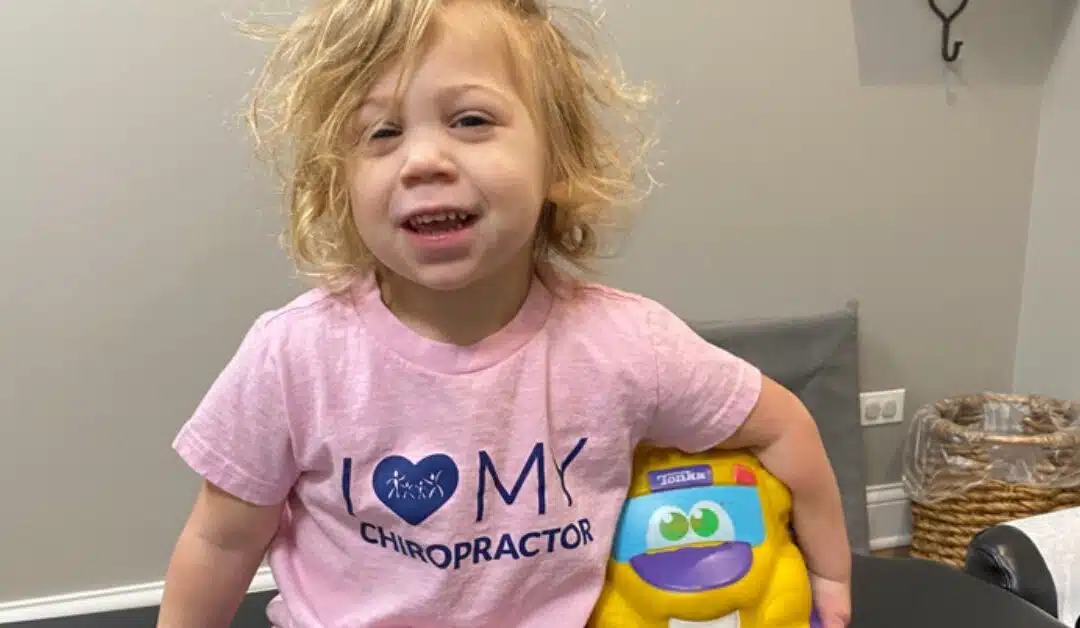As a baby, Jackson’s struggles with reflux, gas pains, and sleeplessness were incredibly challenging for his first-time parents. Each night would induce so much stress and heartbreak as they were unable to comfort Jackson as he continuously cried.
If this scene feels all too familiar, your baby may be one of the estimated 25% of infants that face excessive crying bouts known as colic.
The constant crying leaves caring parents feeling dismissed when well-meaning friends comment, “She’ll grow out of it.” Yet new insights into colic’s causes are emerging, along with effective solutions to help your baby and whole family regain peace.
This article delves into the latest perspectives on what’s behind colic, its impact, and most importantly, how new approaches address the root issues through gentle, drug-free chiropractic care. Read on for hope and answers to end the exhaustion and distress colic creates.
What is Colic in Babies?
Colic is defined as intense, repeated crying in babies that:
- Lasts over 3 hours per day
- Occurs more than 3 days per week
- Continues for over 3 weeks
- Resists soothing techniques
These prolonged crying bouts exceed what’s considered normal fussiness. And they’re distinct from tears due to immediate needs like hunger or a soiled diaper.
Babies often arch their backs, clench their fists, and bear down during colic episodes. This suggests acute discomfort, and the tension in their neck and arching of their back is a clear indicator of where the root cause of the stress and dysfunction often lies, not just in their digestion but in their neck, spine, and nervous system. The crying usually peaks in the evening, disrupting the baby’s and frazzled parents’ sleep.
Colic Baby Symptoms
- Crying in a high-pitched and inconsolable manner
- Tensing the back, legs, and belly
- Clenching fists and facial flushing
- Having trouble sleeping and feeding
- Finding temporary relief from crying after passing gas or pooping
- Being fussy during the late afternoon or evening
- Refusing to calm down even after trying everything.
You may also notice your baby showing colic symptoms and struggles with other parasympathetic nervous system and vagus nerve functions like digestion, sleep quality, and immunity. So, issues like reflux, constipation, eczema, and frequent illnesses often accompany the intense crying. Put simply, most often a colicky baby does not “grow out of” their challenges but “grows into” a chronically sick, constipated child.
The nonstop crying impacts child development and family life. Yet despite affecting up to 72% of babies at some point, conventional medicine claims the causes “remain unknown” and suggests just waiting it out.
If your baby shows these colic patterns, don’t brush them off. Promptly identifying these colic baby symptoms based on the specifics above allows corrective care to relieve the discomfort quickly.
The Real Impact of Colic
Did you know that the constant crying of colicky babies can have serious consequences? It can cause disruptions that can hinder the baby’s development and make life tough for the whole family. It’s important to understand the impact of colic so we can find solutions that work.
For babies, the constant distress and lack of sleep can lead to challenges that might impact their overall growth, brain development, and bonding with their caregivers. This can cause issues down the line, like poor self-soothing or learning delays.
Colic can also make feeding difficult, impacting the baby’s nutrition and immune system. And it’s not just the baby who suffers—everyone in the family, from the parents to the siblings, can feel the effects of a colicky baby. Coping with the lack of sleep and financial burdens from endless crying can make everyone feel stressed out.
In some cases, colic can even lead to more serious issues like shaken baby syndrome or postpartum mood disorders. Therefore, it’s crucial to find solutions that can help ease the suffering of both baby and parents.
Even if it’s just a mild case of colic, finding ways to help make life a little easier for everyone involved is worth it.
Why Colic Is Not “Normal” Crying
Conventional medicine normalizes colic as just temporary crying babies outgrow. However, emerging insights dispute this notion. New evidence reveals colic is not normal but instead signifies:
- Digestive dysfunction from an early neurological imbalance
- An urgent cue signaling a baby’s overwhelmed, stressed system
- Risk of future issues if the underlying dysfunction remains
Simply waiting it out neglects underlying causes. Early correction of neurological dysfunction and dysregulation restores comfort and development. Prioritizing colic education and solutions prevents much distress.
Common Misconceptions About Colic
Traditional medicine blames colic on issues like gas pains or food sensitivities. These
explanations fall short and lead to limited solutions:
Myth: It’s just normal crying that resolves on its own.
Truth: It indicates neurophysiological dysfunction that can progress to chronic problems.
Myth: Colic is caused solely by gas or food intolerances.
Truth: These result from more primary neurological imbalances.
Myth: Formula changes and probiotics cure colic.
Truth: They offer only a partial remedy but don’t address root dysfunction.
Myth: Eliminating milk products always helps.
Truth: True dairy or lactose intolerance is rare, and even when present, there is a root cause to the intolerance itself.
Myth: Colicky babies just need to pass gas.
Truth: They don’t produce more gas than typical infants.
Myth: Only time will improve colic.
Truth: Gentle restoration of nervous system balance often brings lasting relief.
While intestinal issues play a secondary role, they stem from deeper neurological causes. To end the distress, we must address the roots.
The Colic “Perfect Storm” Sequence
Recent research has uncovered a series of events that are responsible for colic’s excessive crying and digestive issues. These events are called the “Perfect Storm”, and they occur in the following sequence:
- Phase 1 – Maternal and Fetal Stress: Emotional, inflammatory, or traumatic stress faced by the mother passes to the developing brain and nerves of the baby, which can alter neurological development and function.
- Phase 2 – Birth Trauma: Interventions like c-sections, vacuum/forceps delivery, or difficult labor create a condition known as subluxation, which is a neurological dysfunction that leads to sympathetic dominance and vagus nerve dysfunction.
- Phase 3 – Nervous System Imbalance: Excessive stress overwhelms the nervous system and triggers a fight-or-flight reaction instead of “rest and digest” activation, causing the baby to struggle with reflexive functions like feeding, sleeping, and soothing.
- Phase 4 – Colic Symptoms Emerge: The baby develops intense cries for calming input until nervous system function improves.
The Perfect Storm model explains how this cascade of events leads to signs of colic. To reverse the dysfunction, it’s important to restore optimal nervous system function.
How Subluxation Disrupts Your Baby’s Nervous System
Connecting colic’s neurological dysfunction requires examining a pivotal phenomenon called subluxation. Neurospinal tension, misalignments, and dysfunction like these disrupt vital communication
Diving deeper into the connections between birth interventions or injuries and neurospinal function, we must discuss the role the vagus nerve plays in colic baby symptoms. The vagus nerve is perhaps the most important nerve in the entire body, and it’s actually a cranial nerve, meaning it originates and branches from the delicate brainstem and upper neck area.
The location of the vagus nerve makes it especially susceptible to birth intervention and injury via things like forceps or vacuum extraction, c-section, induction, and so forth, and it’s also quite sensitive to inflammation and other forms of irritation.
Since the vagus nerve is known as the “rest, regulation, and digestion” nerve – when it’s disrupted and dysfunctional, the symptoms of colic set in, with things like sleep, digestion, and self-soothing immediately affected.
Drug Free Options for Colic: Neurologically-Focused Chiropractic Care
Neurologically-Focused Chiropractic Care is a specific type of care that can help babies who suffer from colic. The real key to lasting relief is addressing the root cause or neurological dysfunction, not just looking to cover up symptoms (traditional medical approach) or change the diet and add supplements (natural or nutritional approach).
Once Jackson started at a PX Doc office receiving Neurologically-Focused chiropractic care, his parents said he turned into a completely different baby. With consistent care, his colic disappeared, and he started sleeping through the night! His happy personality was finally able to break through.
If you’re ready to find relief for your little one and, in turn, for your entire family – then use our directory to find a local, trained, and ready PX Doctor right away.
To learn more about how our clinical process and care protocols work, as well as the incredible technology we use to find the root causes of subluxation and neurological dysfunction, please follow this link to learn more.





